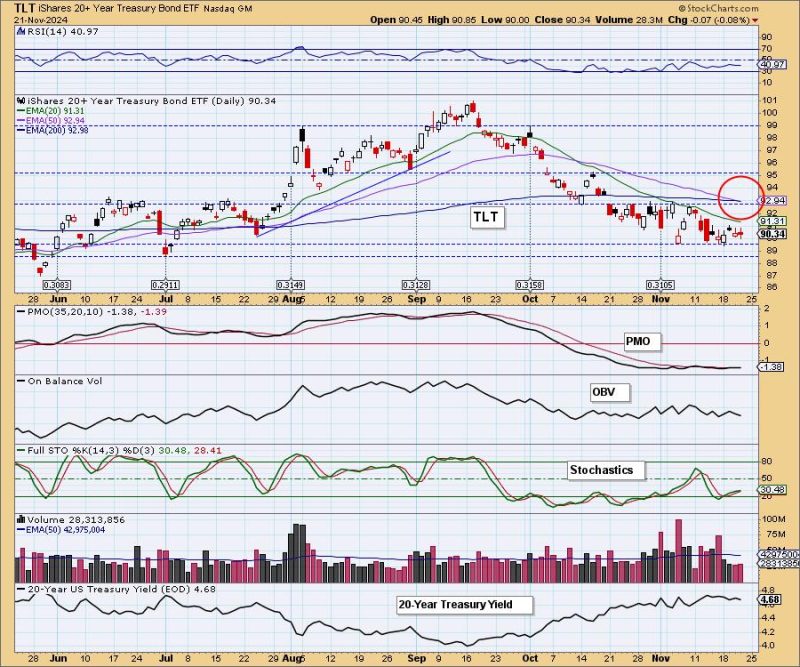In the world of investing, the emergence of technical indicators plays a crucial role in decision-making processes. One such indicator that has recently flashed a warning sign for investors is the Death Cross sell signal. Bonds, considered a safe haven asset, have been a focal point for investors seeking stability and security in uncertain times. However, the recent development of the Death Cross in the bond market has raised concerns among investors and experts alike.
The Death Cross is a widely recognized technical analysis pattern that occurs when a short-term moving average crosses below a long-term moving average. In the case of bonds, this event is viewed as a bearish signal that suggests a potential downturn in bond prices. Typically, the Death Cross sell signal is seen as an indication of weakening market sentiment and a possible shift in investor behavior towards riskier assets.
The significance of the Death Cross sell signal in the bond market cannot be understated. Bonds are traditionally viewed as a safe investment option with a lower level of risk compared to other asset classes. Therefore, when a bearish signal like the Death Cross emerges for bonds, it raises questions about the future direction of the market and how investors should position themselves accordingly.
The implications of the Death Cross sell signal extend beyond just the bond market. As a key component of the broader financial markets, bonds play a critical role in shaping investor sentiment and influencing asset allocation decisions. The appearance of the Death Cross in bonds could potentially trigger a chain reaction that impacts other asset classes and market sectors.
Investors who closely follow technical analysis patterns like the Death Cross are likely to adjust their investment strategies in response to such signals. The sell-off prompted by the Death Cross could lead to a flight to safety as investors seek refuge in alternative assets or cash positions. This shift in investor behavior could have widespread repercussions on market dynamics and portfolio performance.
While the Death Cross sell signal is a cause for concern among investors, it is essential to approach such indicators with caution and carefully consider other factors influencing the market. Technical indicators serve as valuable tools for analyzing market trends, but they should be used in conjunction with fundamental analysis and economic data to gain a comprehensive understanding of market conditions.
In conclusion, the emergence of the Death Cross sell signal in the bond market is a noteworthy development that warrants attention from investors and market participants. As investors navigate the implications of this bearish signal, it is crucial to evaluate the broader market environment and consider a diversified approach to portfolio management. By staying informed and adapting investment strategies in response to changing market conditions, investors can navigate the challenges posed by technical indicators like the Death Cross and position themselves for long-term success.

























